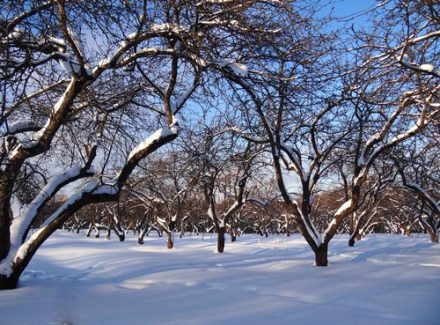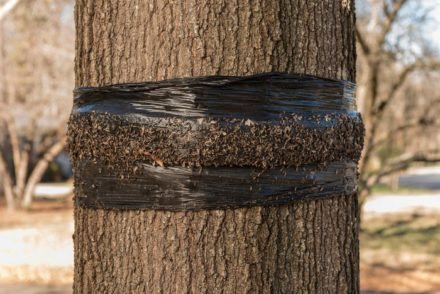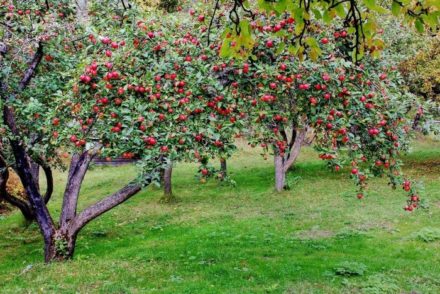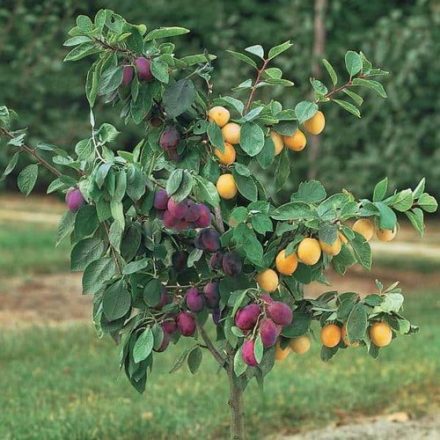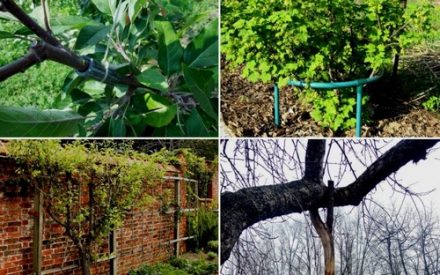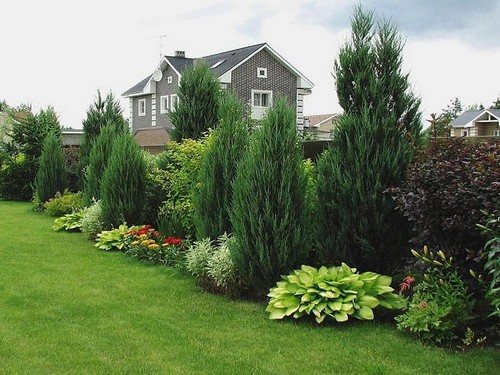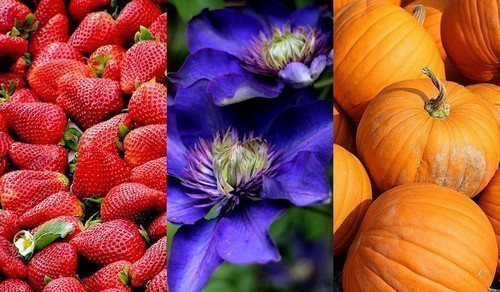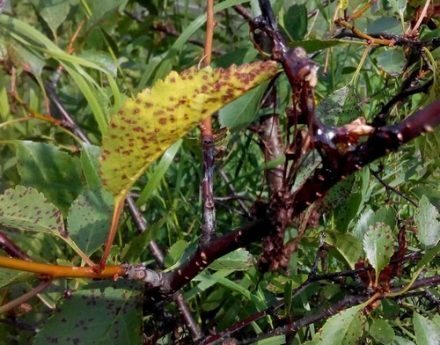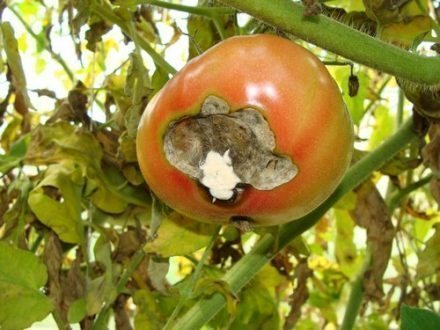Tree roots need regular watering, fertilizing, and protection from drought and frost. Mulching the tree trunk circle is an effective way to preserve moisture and nutrients in the soil, suppress the growth of weeds, and protect roots in winter. Mulch components enrich the soil with organic residues, prevent erosion, soil erosion, and attract worms and beneficial insects.

Among the many mulching materials available, it can be difficult to choose the ones that are suitable for mulching the soil around trees. The choice of one material or another depends on the desired result: protection from heat and cold, nutrition of the soil, decoration of the garden.
Types and properties of mulch for trees
All types of mulch that are used on personal plots are divided into 2 types: organic and inorganic.
The basis for organic mulch are products from the processing of natural materials. Its important property is the enrichment of the soil around the trunks with nutrients. To cover the trunk circle of trees, pine needles, cones, sawdust, bark, branches, straw, hay, rotted manure and compost are used.
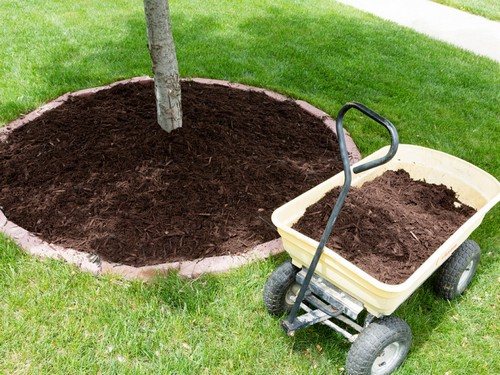
Needles improve soil ventilation, drainage, repel rodents, and increase soil acidity. The resins contained in it slow down metabolic processes in the soil.
Sawdust, bark, wood chips, and small branches improve soil aeration, increase its acidity, retain moisture and snow, and prevent nitrogen from penetrating the soil.They are used after two years of aging with sand and nitrogen-containing fertilizers.
Hay, straw, and mown grass quickly rot, supply the soil with organic matter, and contain plant seeds. Hay often harbors small rodents and insects that harm trees.
Compost is organic remains of sawdust, wood shavings, leaves, wood chips, vegetables, and fruits that have been rotted for two or more years. It is considered the best type of natural mulch.
Inorganic mulch does not rot. It is reusable and has protective and decorative properties. These are stones, pebbles, gravel, crushed stone, broken brick, agrofibre, paper, cardboard. These materials do not nourish the soil, but retain and allow moisture to pass through, improve the appearance of the site, and prevent the growth of weeds. To feed the roots, inorganic mulch is removed from under the trees, the trunk circles are fertilized, loosened, and then returned to its original place.
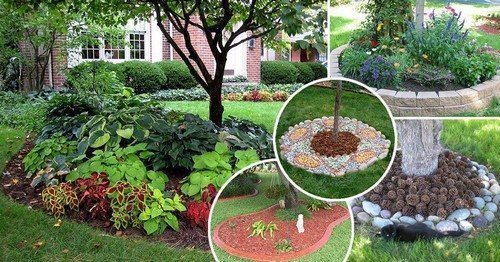
Features of using mulch
For coniferous and fruit trees that do not require organic feeding, inorganic mulch is used. It suppresses the growth of weeds, allows moisture to reach the roots, creates an attractive appearance for the area, and protects the roots from frost. In the tree trunks of such trees, bright flower beds are created that do not require careful care and create a good mood.
Needles and wood processing waste increase the acidity of the soil. They cover the soil around apple, quince, and dogwood trees, which produce high yields on acidified soils. Plums and cherries grow well in neutral soils, so you should mulch them with pine needles and sawdust carefully.Alkaline soil is loved by tall and white plums, rowan, yew, viburnum, so pine needles and wood shavings are not suitable for them.
Organic materials are used to protect and fertilize the soil around trees. Rotted compost and manure are ideal mulch for such a case.
Rules for mulching tree trunks
Typically, tree trunk circles are covered in the spring, when the soil around the trees has already warmed up, dried out, and the first shoots of weeds have appeared. First, last year’s organic mulch, in which insects, rodents, and putrefactive bacteria took refuge for the winter, is removed and burned. Then they loosen, fertilize the tree trunk soil, and add fresh mulch. The diameter of the circle should be approximately equal to the diameter of the tree crown.
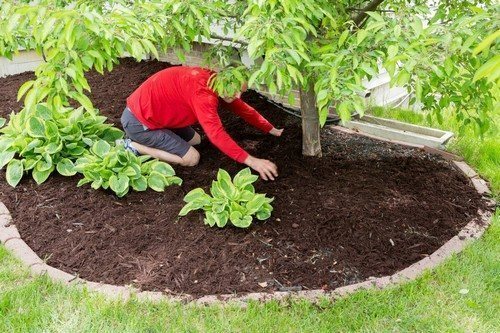
The effectiveness of mulching depends on the thickness of the layer. An excessively thick layer will lead to rotting; too thin a layer will lead to the development of weeds and loss of moisture. The optimal thickness is 3–7 cm. The heavier the soil, the smaller the mulch layer. The height of the layer depends on the type of material:
- needles – 3–5 cm;
- sawdust, shavings – 3–7 cm;
- bark – 3–5 cm;
- hay, straw, grass – 7–15 cm.
Mulching too early in spring slows down the awakening of plants from hibernation. Mulching immediately after heavy rains is not recommended, since pathogenic microorganisms, fungi, and slugs quickly develop in damp conditions. Unrotted manure and compost cause burns and death of young seedlings.
Autumn mulching is carried out in regions with cold winters to protect roots from freezing and retain snow cover around trees. You cannot lay a layer of mulch on frozen ground.
Proper use of mulching improves the growth and productivity of trees on a plot of land. This is an effective way to protect and decorate your garden.


